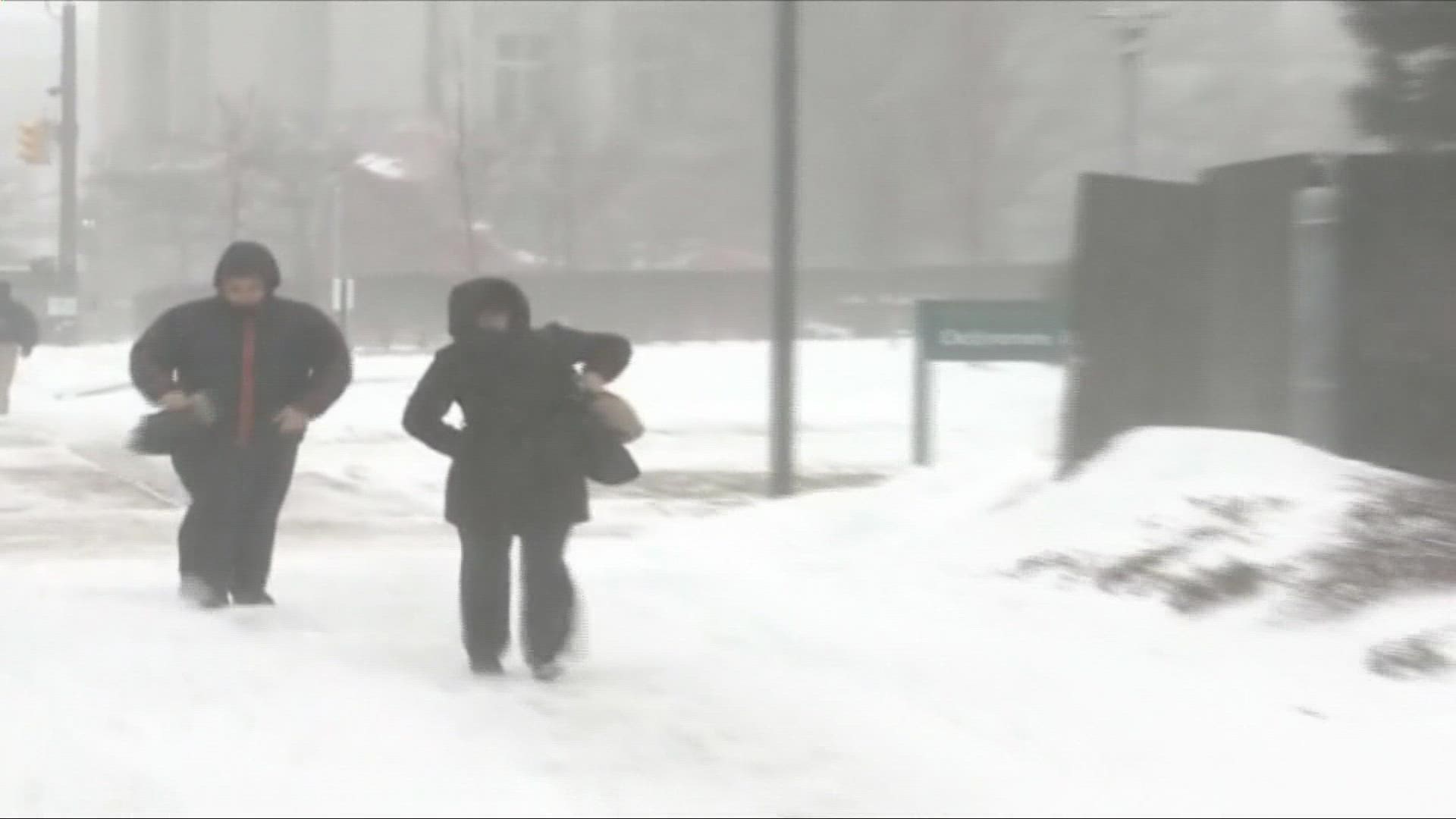CLEVELAND — Never underestimate wind chill.
Frost nip can begin in as little as 30 seconds on exposed or under-protected skin. The pins and needles sensation is a warning sign to get inside and get warm, because frost bite can occur in minutes, too.
"Wind speed is something people don't often think about, and this storm is going to have high winds, which poses an additional risk," Dr. Robert Hughes from the University Hospitals Cleveland Medical Center's emergency department said.
Frost nip and bite symptoms start with red, pale skin and numbness, stiffness in muscles, and — in severe cases — even blistering. If you get wet and then hit with the wind chill or extreme cold, you could be at risk for hypothermia — shivering, dizziness, fatigue, and lack of coordination are symptoms.
Even with normal gloves, it doesn't take long before you can't feel your fingers and hands. It's the wind chill and wind speed that many of us aren't taking into consideration.
According to the National Weather Service, when the air temperature hovers around zero and we have winds 60 miles an hour or more, it can take under 5 minutes for your skin to develop frostbite. That combination means wind chill is nearly -50, and your body would lose heat at the same rate as if the air temp alone was that cold.
Your body goes into survival mode and sends blood to your inner organs, leaving your hands, feet and face vulnerable.
Understand that if you factor in this constant wind, parts of Northeast Ohio are colder than the top of Mount Everest. I checked, and it's only -19 degrees at the top with win four miles an hour.
It's even colder here than at the North Pole, which was -22 with light winds, so please keep this in mind for your mail and delivery drivers, first responders, and those folks trying to get the lights back on.
If you don't have to go out, don't. If you do, dress in layers, cover up all exposed skin, and try to be out there for as short a time as possible.
The wind is blowing snow and hiding ice patches, which can be very dangerous if you're trying to walk somewhere without proper footwear and you slip. And don't bother trying to shovel until this wind settles down, especially if you have a heart condition.
Cleveland Clinic tells me while they're emergency departments are slow right now, they are getting people who've fallen on the ice, and they've had one case of hypothermia. If you experience symptoms, get medical attention with warm liquids, blankets, and dry clothing.
The cold is also very dangerous for those with asthma, so take precautions. At home, change the battery in the smoke detector if you haven't done so in six months. Keep the area clear around candles, fireplaces, and space heaters. Make sure you have a working fire extinguisher.
If the power goes out, do not be tempted to fire up a grill or kitchen appliance for heat without a working carbon monoxide detector and a window to open.
"Try not to use anything for a heating element without good ventilation or you can be at risk for carbon monoxide poisoning," Hughes explained, "which is dangerous because you can't smell or taste it."
You could try filling metal water bottles with hot water to keep you warm. Hughes also suggests if there's a power outage, try to keep everyone in one room for body heat, and you can use blankets to block windows and door drafts.
Also: If it's too cold for you outside, it's also too cold for your pets. Keep them indoors and protected with you, or at least be sure they have protected shelter and water that cannot freeze. Additionally, this type of weather puts them at risk for having their paws or fur frozen to the ground. It's best to keep them inside with you.

